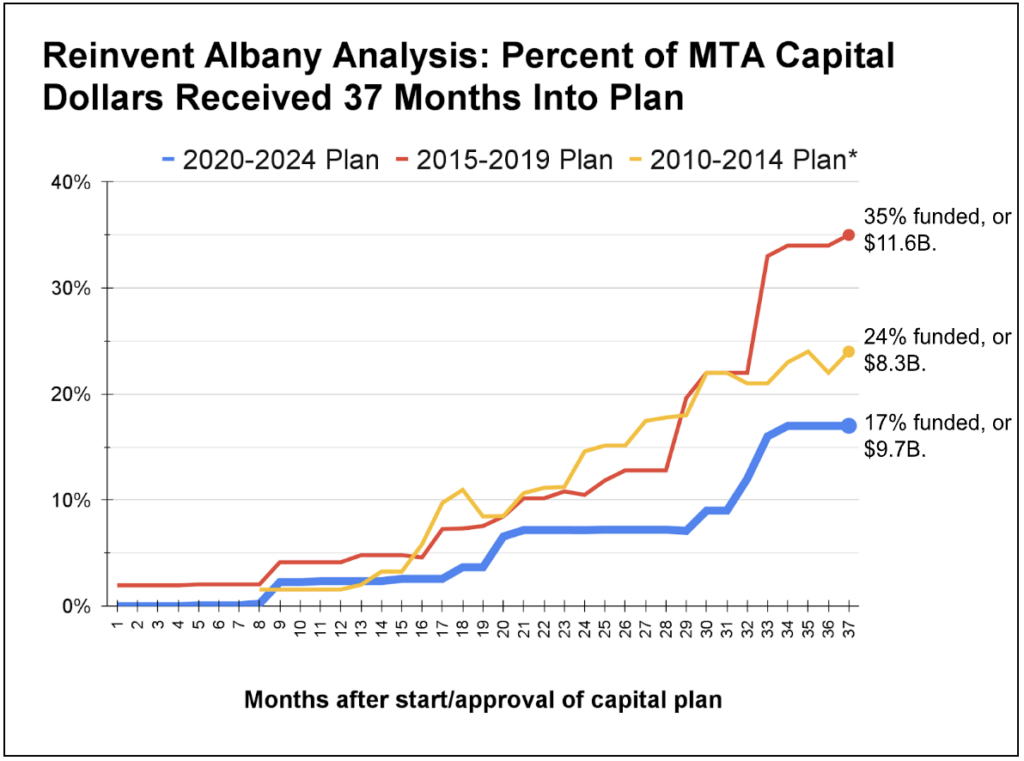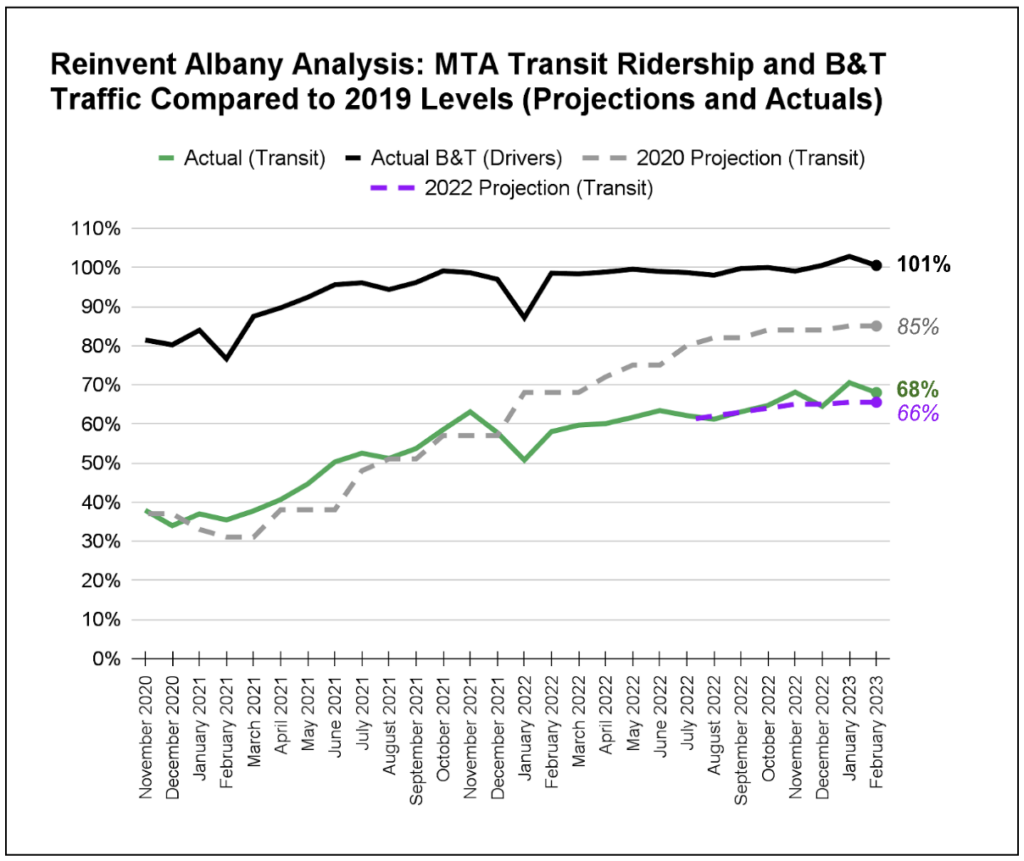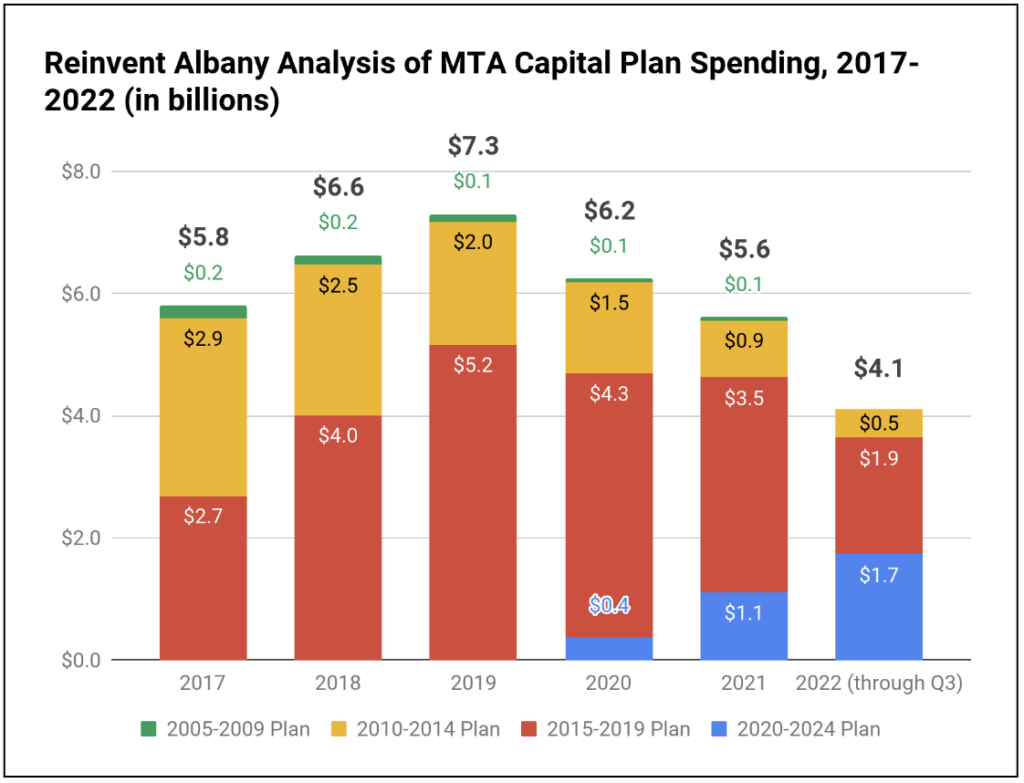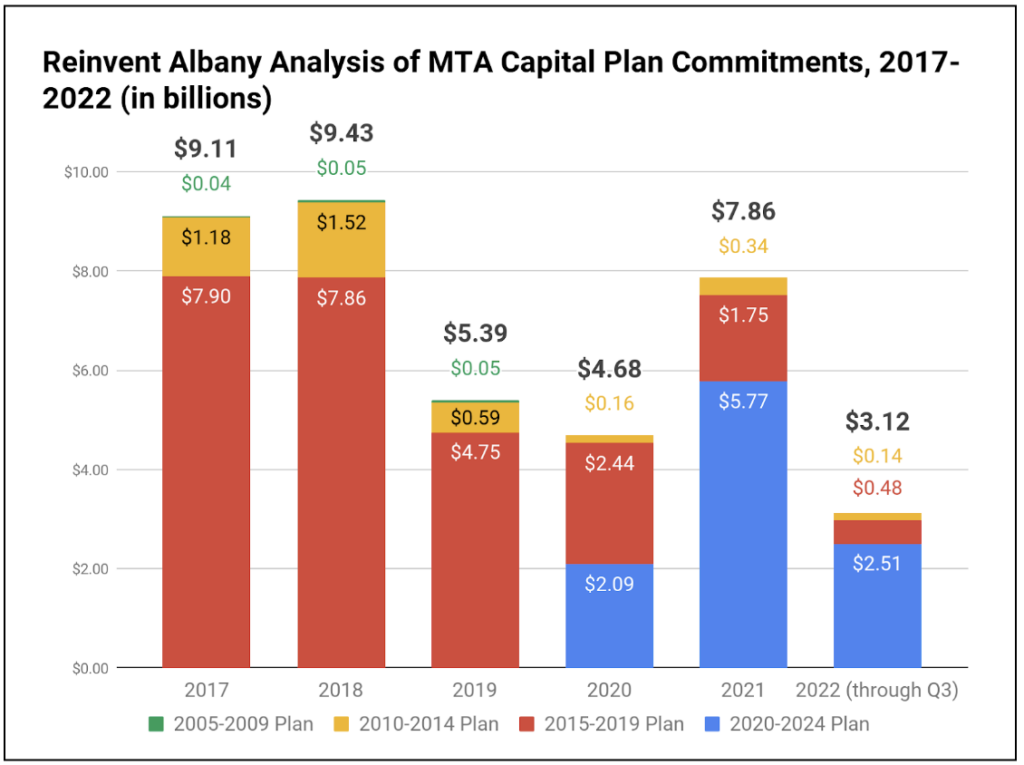Watchdog Testimony to Senate Calls for a Clean Slate for Penn Station
State Should Pay for Improvements, Sever Station from Real Estate Deal
Good morning. I am Rachael Fauss, Senior Policy Advisor for Reinvent Albany. We advocate for more transparent and accountable New York government, including for authorities like the MTA.
Thank you for holding this hearing today on many important issues affecting the Metropolitan Transportation Authority and transit riders. Agencies with $18 billion operating budgets and $55 billion capital plans deserve close legislative oversight, and we appreciate your continuing to hold hearings like this one today.
My testimony focuses on the following issues, which are summarized below, with the written testimony including full details and charts which I urge you to review.
- Penn Station – It’s time for a clean slate. The Governor and Legislature must recognize the reality that the Penn Station development deal with Vornado has failed. It is delusional to continue claiming that PILOT payments from indefinitely delayed Vornado development will pay for fixing Penn Station.
We urge the Governor, Senate, and Assembly to use state capital budget funds to fix Penn Station in conjunction with a federal match and modernize the improvement plan to increase capacity per Senator Comrie and others. The MTA cannot afford to pay for Penn Station upgrades – a priority of the Governor’s – with its own resources. We further urge the Governor and Legislature to completely separate the funding of Penn Station improvements and the failed Penn area development deal, and to unwind that failed deal by restoring NYC control over property taxes and eliminating PILOTs and other forms of subsidy for Vornado.
- MTA Ridership – The MTA should continue to update ridership projections, ideally with every financial plan. The current McKinsey projection appears to be on track, with transit ridership at 68% of 2019 levels in February 2023. McKinsey’s projection was formulated in July 2022, however, and may not hold. See our chart in the full written testimony.
- Operating Budget – The Senate should ensure the MTA’s budget deficits are fully addressed in your one house bills, and restore the state’s historic funding commitments by:
- No longer raiding the Metropolitan Transportation Operating Assistance Fund (MTOA) for the state’s 18-b program contribution (+$175 million/year);
- Increasing NYS 18-b contributions to adjust for inflation (+$125 million/year); and
- Adjusting the state’s PMT “make whole exemption payments” for inflation (+$200 million/year).
Together, these restorations would provide $500 million/year more for the MTA.
- Capital Budget – MTA spending on capital projects has hit historic lows, as shown in the charts of our full written testimony.
- In order to increase transparency of the MTA’s progress on specific projects, the Senate should include capital budget transparency in your one-house bill, specifically Senator Ramos’s bill, S3545, which is part of the Fix the MTA package. This bill would require the MTA’s capital dashboard to include new information about contractors, contract numbers, source of funding for projects (including congestion pricing), and coding by accessibility and resiliency.
- We also support inclusion of Senator Gounardes’s bill to remit the Internet Sales Tax directly to the MTA (S1205, also part of the Fix the MTA package) in the Senate’s one house bill to ensure that this important capital funding stream is protected from raids by the Governor.
- Congestion Pricing – The lack of congestion pricing is having a substantial impact on the MTA’s ability to make progress on its capital plan. With congestion pricing making up $15 billion of the $55 billion capital plan, congestion pricing remains essential for the MTA to make progress on its ambitious capital plan, and should not be raided for the operating budget.
- It should be noted that the MTA’s operating budget is reimbursed by the capital budget for maintenance work. This means that MTA workers’ salaries will get paid from congestion pricing just like they do for running service: $2 billion a year from the capital plan pays for MTA worker salaries for maintenance, as seen in the most recent February 2023 MTA Financial Plan (see page 61).
Our full written testimony is available here and below.
New York State Can Fix Penn Station Without Tax Breaks for Vornado
Fortunately, the future of Penn Station does not depend on the success or even survival of struggling real estate developer Vornado, which is being crushed by debt and pandemic commuting patterns, and has written down their portfolio due to Midtown property value losses.
New York State planning documents say the State will pay $1.75 billion of the $7 billion needed to fix Penn Station (25%), with the feds (50%) and New Jersey (25%) paying the rest. As part of its funding, PILOTs would “cap”out at $875 million in Payments in Lieu of Taxes (PILOTs) from new Vornado office towers in the Penn Station area. (These PILOTs are New York City property taxes diverted to the state.)
With Vornado’s bombshell announcement in November 2022 and continued comments that it is delaying all new development around Penn Station for an indefinite period, some observers have wrongly concluded that Vornado’s woes will delay fixing Penn Station.
This is not true. The Governor and Legislature can relatively easily find $875 million more in NYS capital funds elsewhere and move quickly to fix Penn. For some perspective, $875 million is only 1.5% of the current MTA capital plan or 8.25% of the Green CHIPS tax break. The FY2024 proposed executive budget already reappropriates $1.2 billion in the capital budget for the Penn Station project, but is limited in its scope to Penn expansion OR below ground transportation improvements. $100 million has been spent on design by the MTA, and the next MTA capital plan is slated for 2025-2029, with the MTA’s 20-year needs assessment due in October 2023.
We caution, however, that given the delays to congestion pricing, the MTA should not be expected to fund Penn Station upgrades with its own resources, as its 2020-2024 capital plan is significantly behind, as noted previously in our testimony.
It’s time for a clean slate. The Governor and Legislature must recognize the reality that the Penn Station development deal with Vornado has failed. It is delusional to continue claiming that PILOT payments from indefinitely delayed Vornado development will pay for fixing Penn Station.
We urge the Governor, Senate, and Assembly to use state capital budget funds to fix Penn Station in conjunction with a federal match and modernize the improvement plan to increase capacity per Senator Comrie and others. We further urge the Governor and Legislature to completely separate the funding of Penn Station improvements and the failed Penn area development deal, and to unwind that failed deal by restoring NYC control over property taxes and eliminating PILOTs and other forms of subsidy for Vornado.
MTA Ridership
Thanks to the MTA’s release of daily ridership numbers as open data – and the passage of Senator Comrie and Assemblymember Carroll’s MTA Open Data Act – the public is able to easily see how well MTA ridership is rebounding post-COVID. While ridership is tracking the McKinsey projections from July 2022, we continue to ask the MTA to ensure its ridership projections are updated regularly – ideally as part of their February, July, and November financial plans. Below is a chart that shows MTA ridership matched up with original and updated McKinsey projections.
As noted in our November 2022 report, Ridership Down, we believe the decline in fare revenue, combined with an end to federal COVID operating aid and historically high debt levels, will destroy the MTA and transit service unless the state budget delivers the MTA billions in new dedicated operating funds.
MTA Operating Budget
We agree the MTA’s fiscal cliff is real, and the Governor’s proposal of $8.3B in total state operating aid ($4.4 billion appropriated and $3.9 billion remitted directly to the MTA) is good news for the MTA and riders, because it will keep the MTA solvent and fill budget gaps. Because any new taxes and mechanisms to require local payments will be subject to intense political debate, we urge the Legislature to examine additional funding options to ensure the MTA is fully funded in the final budget. Specifically, we asked in budget testimony for the Governor and Legislature to make good on the state’s historic funding commitments by:
- No longer raiding the Metropolitan Transportation Operating Assistance Fund (MTOA) for the state’s 18-b program contribution (+$175 million/year);
- Increasing NYS 18-b contributions to adjust for inflation (+$125 million/year); and
- Adjusting PMT “make whole exemption payments” for inflation (+$200 million/year).
Together, these NYS contributions would add $500 million to the MTA’s operating budget this year – which we note is the same size as the Governor’s proposal for new contributions from NYC. Going forward, these funds should continue to grow to adjust for inflation. (Increasing NYS’s 18-b program would also require a higher local match from NYC and the counties.)
MTA Capital Spending
On the capital plan, to date, only $9.7B of the $55B plan (17%) has been received by MTA, largely from federal funds ($6B). It is troubling that the MTA’s most ambitious plan yet is lagging – as of 37 months into the 2015-19 and 2010-14 plans, both were funded at higher levels, as shown in the chart below.

MTA capital spending is also behind, as seen from recent data from the MTA’s 2022 Q3 audit (note that there is a 3-5 month lag in this data being made available). While full data for 2023 is not yet available, congestion pricing’s delay appears to be having a significant impact on capital spending. See the charts below, which examine capital expenditures and commitments. We note that commitments are the start of the process when contracts are entered into, rather than the end of the process when contractors are paid for work completed (expenditures).
Congestion Pricing
Congestion pricing remains essential if the MTA is to make meaningful progress on the capital plan, given the historically low levels of funding and spending for the plan. Additionally, the MTA cannot afford to make up for lost capital dollars from its own resources, given its operating budget deficit and debt service payments making up over 20% of its recurring operating revenues.
It should be noted that the MTA’s operating budget is reimbursed by the capital budget for maintenance work. This means that MTA workers’ salaries will get paid from congestion pricing just like they do for running service: $2 billion a year from the capital plan pays for MTA worker salaries for maintenance, as seen in the most recent February 2023 MTA Financial Plan (see page 61).
Thank you for your consideration.



